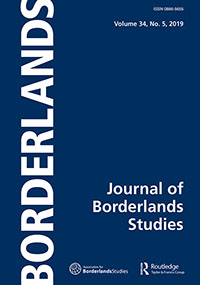A new publication from our team was released a few days ago in the Journal of Borderland Studies:
The paper discusses the question what the main structural driving forces for cross-border commuter dynamics are. It does so at the example of the Alpine region, referring to results of the ARPAF cross border project.
We tested several hypotheses and we found out:
„The results show that cross-border commuting has several driving forces. A statistical causality in the strict sense cannot be proven, but there is strong evidence for plausible arguments […]:
(1) Differences in the economic characteristics of a border region – operationalized here by wage difference – play an important role. The greater the differences, the more intense the border commuting patterns tend to be.
(2) The distance of attractive labor markets to a border also plays an important role. In particular, municipalities located less than 10 kilometers (air distance) from the
nearest border are likely to receive high shares of commuters.
(3) The degree of urbanization plays a role in those cases where (1) and/or (2) are present, but it does not function as a stand-alone driving force. The presence of metropolitan functions, however, strongly favors commuting dynamics.
(4) A series of further factors complement the abovementioned arguments, depending on the regional context. Morphology plays a role in (high) mountain regions especially; language matters when different language groups are represented in the border region; and political contingency is crucial in all cases“ (pp. 14/15)

To cite this article: Tobias Chilla & Anna Heugel (2019): Cross-border Commuting Dynamics: Patterns and Driving Forces in the Alpine Macro-region, Journal of Borderlands Studies, DOI: 10.1080/08865655.2019.1700822
A limeted number of free copies can be found here https://www.tandfonline.com/eprint/FGWISSEVEJJVADXDBUEY/full?target=10.1080/08865655.2019.1700822
Alternatively have at look at Researchgate.
For a related publication on the measurement of cross-border accessibility see Chilla & Heugel 2018.

